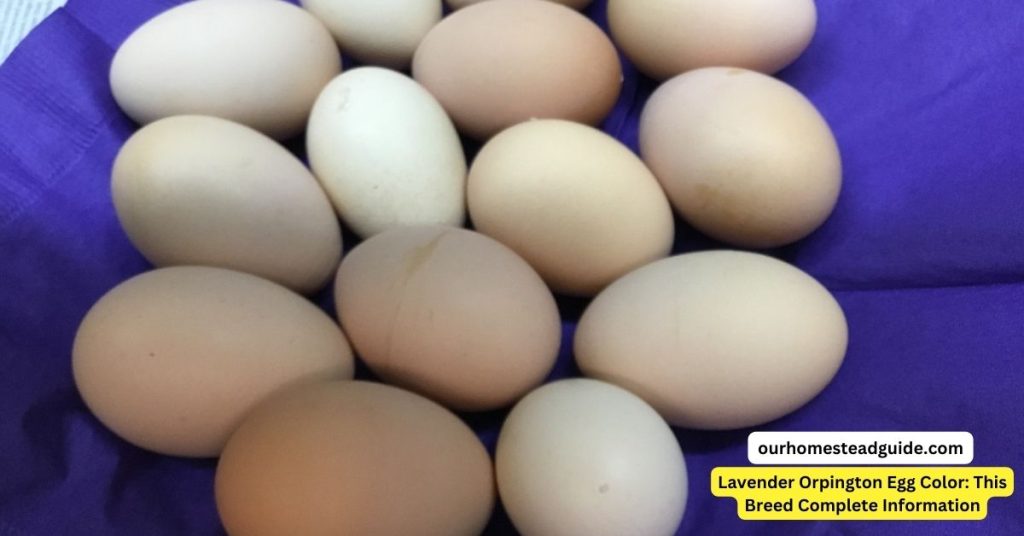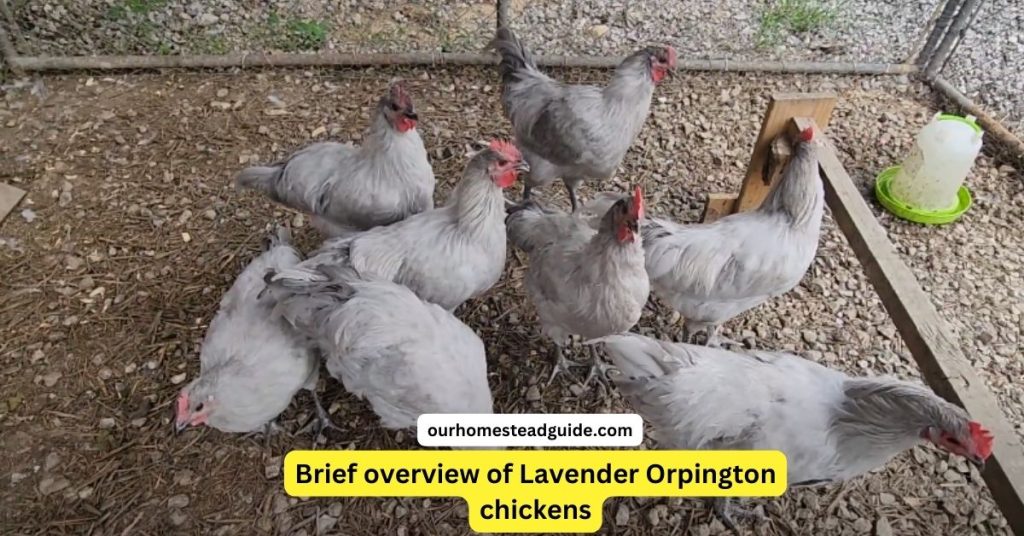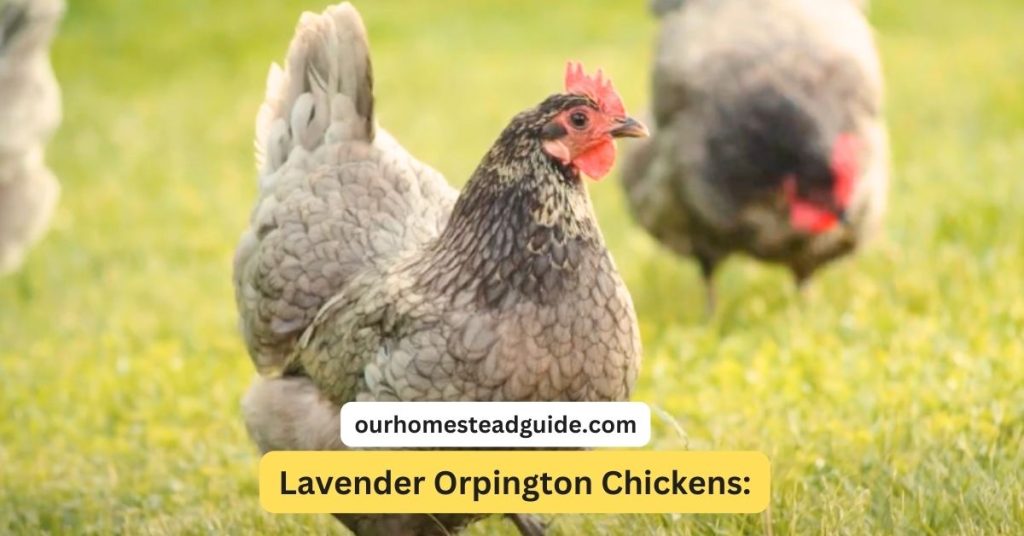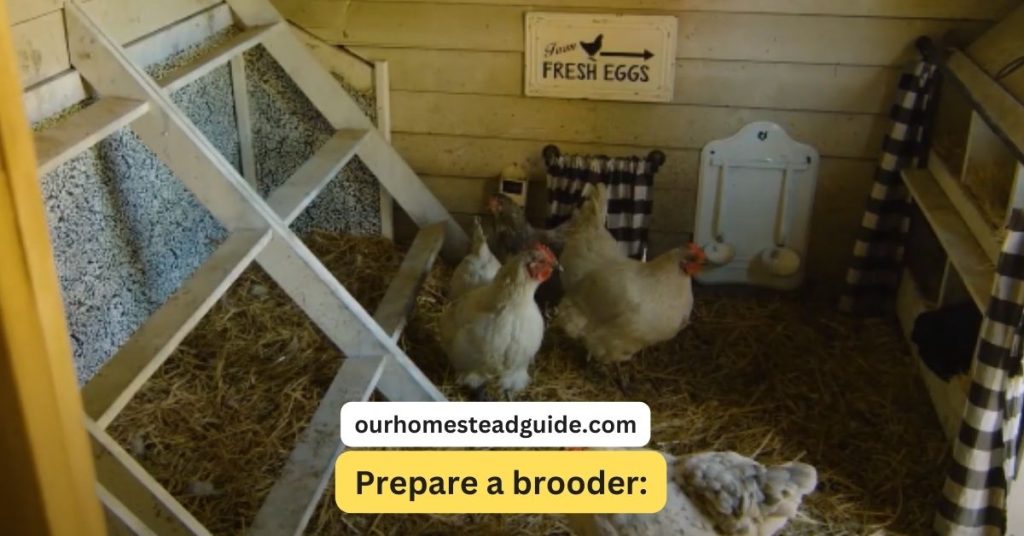Lavender Orpington Egg Color: This Breed Complete Information
lavender Orpington egg color Beautiful light brown, medium-sized eggs with a tinge of pink are laid by lavender Orpington chickens. Their eggs are still really beautiful, even if they won’t lay pure blue or lavender eggs as their feathers would imply!

Here are some more specifics on Lavender Orpington eggs:
Egg production: They are a passable layer, producing between 170 and 200 eggs annually.
Laying season: They typically lay all year round, except for molting and broody periods.
Egg size: They usually lay medium-sized eggs that weigh around 2 ounces apiece.
Variations in egg color: Each hen will have a different shade of brown; some eggs will be lighter or darker than others. Some chickens could also produce eggs that have spots or speckles.
Brief overview of Lavender Orpington chickens

| Aspect | Description |
|---|---|
| Breed Origin | Developed in late 1800s in England by William Cook |
| Appearance | Large, heavy birds with a broad, compact body and lavender-colored plumage |
| Temperament | Calm, friendly, and docile; suitable for families and easy to handle |
| Egg Production | Good layers of large brown eggs; may not match high production breeds |
| Cold Hardy | Known for cold hardiness; thick feathering provides insulation |
| Purpose | Originally bred for meat and egg production; popular as ornamental/exhibition birds |
| Maintenance | Relatively easy to care for; require secure housing, balanced diet, and regular health checks |
Importance of Egg Color in Poultry
Contrary to common opinion, neither the nutritional content of the egg nor the health of the bird itself are significantly impacted by the color of the egg in poultry. It is entirely a matter of taste, determined by nutrition and heredity. Nonetheless, it is crucial in several ways for both customers and the chicken business:
Consumer Preferences:
Market differentiation: Strong regional preferences for particular egg hues exist. Europe prefers white eggs, whereas the US market is dominated by brown eggs. Production and marketing tactics are driven by this.
Perceptions of quality: Although it’s not always true, some customers mistake brown eggs for organic or free-range products. These impressions can be used by marketing to sway consumer decisions.
Visual appeal: Depending on one’s tastes, a variety of colors might be aesthetically pleasant. Pastel-colored eggs, such as those produced by Araucana hens, are very appealing to certain people.
Lavender Orpington Egg Color Characteristics
Imagine a chicken whose feathers are as delicate and soft as lavender clouds, and whose steps are all kind and inquisitive. Introduce yourself to the intriguing Lavender Orpington breed, which is well-known for its gorgeous look, amiable disposition, and unexpectedly colorful eggs.
Appearance:
Lush Lavender Plume: Their coat of silky, iridescent lavender feathers, which seem to sparkle in the sunshine, is their most distinctive trait. Each bird is different due to its color, which can range from light gray-blue to deeper hues with traces of pink and purple.
Big and Fluffy: These kinds of giants are not little ones! Roosters may weigh much more than hens, which can weigh up to eight pounds. They are a cuddle-worthy addition to any flock because of their thick down, which keeps them warm even in cold weather.
Kind Faces: Lavender Orpingtons are renowned for having serene, inquisitive dispositions. They are the perfect backyard companions for families with kids since they get along well with both people and other hens.
Egg-cellent Layers:
Creamy Surprises: Lavender Orpingtons lay gorgeous medium-sized, light brown eggs with a faint pink undertone, even though their feathers may suggest blue eggs.
Moderately Productive: Throughout most of the year, lays should be regular, averaging between 170 and 200 eggs annually. Though not the most prolific layers, they more than makeup for it with their tasty eggs and loving disposition.
Delectable and Adaptable: Their eggs work well in baking, for breakfast, or in any dish that asks for tasty, fresh eggs. They are visually appealing for meals because of their robust and color-holding shells.
Lavender Orpington Unique traits and features
Differential Coloration: Their distinct lavender or light gray feathers make them stand out.
Calm State of Mind: Their easygoing and peaceful disposition makes them likable and manageable.
Big and Sleek: hefty birds with a low posture and a large, compact body.
Appropriate Egg Size: lay a lot of huge brown eggs, but not as many as other breeds.
chilly and hard: Heavy feathering makes them well-suited to chilly areas.
Two-Function Heritage: was developed to produce both meat and eggs.
Decorative Appeal: Due to their distinctive hue, decorative or show birds are in demand.
Care Ease: Generally simple to maintain with few needs.
Peace in Society: often get along well with one another, which helps to create a calm flock.
Visually Appealing: They enhance the charm of the poultry yard and are admired for their appealing look.
Egg Color in Lavender Orpingtons
A. Variations in the natural egg color of several breeds of chickens:
Chickens have a remarkably wide range of egg colors! In addition to being aesthetically beautiful, the variety of colors and even patterns can provide information about the origin of the breed as well as possible health risks. A peek into the vibrant world of chicken eggs may be found here:
Brown eggs: most typical! During production, the brown pigment known as protoporphyrin IX is formed on the eggshell. Brown eggs are usually laid by breeds like as Plymouth Rocks, Rhode Island Reds, and Orpingtons (including Buff and Black).
White eggs: Because they don’t have protoporphyrin, their shells are white. Some common species that lay white eggs include Leghorns, Wyandottes, and Minorcas.
Even rarer genetic anomaly: blue eggs! The distinctive color of these eggs is caused by the bile pigment biliverdin. Blue eggs are laid by Araucanas, Easter Eggers, and certain Cream Leghorn breeds.
Not just for Dr. Seuss, green eggs! Certain Ameraucanas and Olive Eggers have greenish hues due to a mix of protoporphyrin and biliverdin.
Eggs with spots and speckles: Certain breeds, such as Cochins and Barred Plymouth Rocks, lay eggs with brown spots on a lighter background.
Isn’t this variation fascinating? Eggs are incredibly colorful, which lends a whimsical element to backyard hen farming.
B. Specifics of egg color in Lavender Orpingtons:
Let’s now concentrate on Lavender Orpingtons. Even though their gorgeous plumage might lead one to believe they lay eggs unlike any other Orpington kind, they lay light brown eggs. Egg color is governed by other genes associated with pigment formation and is not affected by the lavender gene.
Though their light brown eggs aren’t blue or purple (sorry, Dr. Seuss lovers!), Lavender Orpingtons are nevertheless gorgeous and tasty, making them a wonderful complement to any breakfast basket.
I hope you now have a thorough grasp of the differences in egg color that naturally occur in chickens as well as the particular egg color in lavender orpingtons. Regarding these adorable birds, do you have any further questions?
Factors Influencing Egg Color
The common chicken egg is available in a surprisingly wide range of colors, including cool blue, classic brown, and even speckled emerald green. However, what controls this range of colors? Now let’s examine the three main variables that affect egg color:
A. Genetic Factors:
Breed Predisposition: Genetics is the most important factor. The kind and quantity of pigments produced on the eggshell are determined by certain genes carried by each breed. For instance, the oocyanin gene in Araucanas produces their characteristic blue eggs, but the protoporphyrin gene in breeds like Rhode Island Reds produces brown eggs.
Patriarchal Patterns: Genes determining egg color can be co-dominant, recessive, or dominant. For example, the dominant brown egg gene in Orpingtons means that even children with a parent who lays white eggs and another who lays brown eggs are likely to deposit brown eggs. On the other hand, blue eggs are more uncommon since they need two copies of the recessive enocyanin gene.
B. Environmental Factors:
Stress and Illness: Although heredity is mostly responsible, other variables may also be slightly involved. A hen’s ability to produce pigment may occasionally be momentarily disrupted by stress or disease, resulting in lighter or unevenly colored eggs.
Light and Temperature: Although they have a smaller effect, drastic changes in light and temperature can also affect the color of eggs. For instance, abrupt shifts in the cycles of light might momentarily interfere with the synthesis of pigments.
B. Environmental Factors:
Foods High in Pigment: Diet has an impact on the colors of eggs, but it doesn’t directly change the genetic makeup of egg color. Feeding hens with diets high in certain pigments, such as the carotenoids present in maize and marigolds, can intensify the orange hue of their yolks.
Nutrient deficits: On the other hand, pale eggshells can occasionally result from deficits in certain nutrients, especially calcium. But with well-fed chickens, this is not a frequent occurrence.
Across the planet, lavender Orpington is thriving! These cuddly and placid birds are a popular backyard companion because of their attractive appearance, a miable disposition, and superior egg-laying abilities. A docile, hearty breed known for its beautiful lavender-blue plumage and good egg-laying ability.

How to Lavender Orpington?
1. Prepare a brooder:

For the first several weeks of their life, chicks are housed in a heated container called a brooder. A brooder can be made yourself, bought at a pet store, or purchased online. The size of the brooder should allow the chicks to walk around easily without becoming disoriented. To keep the chicks warm, line the brooder with shavings or newspaper and place a heat lamp inside.
2. Obtain Lavender Orpington chicks:
Lavender Orpington chicks are available from hatcheries or internet merchants. Make sure the supplier of healthy chicks you select is reliable.
3. Place chicks in the brooder:

Put the chicks in the brooder as soon as they arrive. For the first week, the brooder’s temperature should be between 90 and 95 degrees Fahrenheit. After that, it should progressively drop by 5 degrees per week until it reaches room temperature.
4. Provide food and water:
Give the chicks fresh, clean water and a chick-starting meal. To help prevent the prevalent chicken illness coccidiosis, the chick starting meal should be treated with coccidiostat.
5. Clean the brooder:
To keep the disease from spreading and to get rid of droppings, give the brooder a once or twice a day cleaning.
6. Move the chicks to a coop:
The chicks can be transferred to a permanent coop when they are 6–8 weeks old. There should be plenty of room for the hens to roam about in a well-ventilated, predator-proof coop.
7. Provide food and water:
Until the chicks are sixteen weeks old, keep giving them chick-starting meals. After that, you may feed them a layer diet, which is meant to aid in egg production.
8. Collect eggs:

Eggs will be laid by lavender Orpington chickens around six months of age. An average of 200 eggs will be laid by them annually.
9. Enjoy your Lavender Orpington chickens:
Friendly and submissive, lavender Orpington hens are wonderful complements to any garden herd. Their eggs have a lovely light tan hue, and they are also excellent layers.
Lavender Orpington Chicken History
Developed in the late 1990s by breeding Lavender Plymouth Rocks with Black Orpingtons, the Lavender Orpington chicken is a relatively new breed. Despite not being recognized by the American Poultry Association, their amiable disposition and decent egg-laying skills make them a popular choice for backyard chicken keepers.
With beautiful lavender-blue plumage, the Lavender Orpington chicken is a big, kind breed. They are amiable, submissive, and suitable as pets for households with young children. They lay 200 eggs a year on average, making them excellent layers as well.
A lovely breed of chicken, lavender Orpingtons are a wonderful addition to any garden flock. They are not particularly prone to illness, need little maintenance, and thrive in both hot and cold climates. They require lots of fresh food and water, as well as a well-ventilated coop.
Lavender Orpington Appearance
The vivid lavender-blue plumage of Lavender Orpington hens makes them a stunning and unique breed. They are a big, robust breed with a round, wide physique and a kind disposition. The following are some salient features of their appearance:
1-Plumage:
Their beautiful lavender-blue plumage, with a subtle iridescent shimmer, is their most distinctive characteristic. Their feathers are equally colored, which gives them an appealing look.
2-Comb and Wattles:
They have one medium-sized comb that rests firmly atop their heads. Their relatively big, V-shaped wattles are fleshy flaps located beneath their beak.
3-Feet and Legs:

The slate blue hue of their feet and legs goes well with their lavender plumage. They have medium-length legs that are proportionate to their physique.
4-Size:
Typically, lavender Orpington hens weigh between five and seven pounds, while roosters weigh between seven and nine pounds. They are regarded as a giant breed of chicken because of their huge stature.
All things considered, Lavender Orpington hens are an eye-catching breed with a tasteful blend of slate blue feet, lavender feathers, and a nicely built physique. Backyard chicken fans favor them because of their pleasant dispositions and gentle temperament.
Lavender Orpington Chickens Care Requirements
Lavender Orpington hens are excellent additions to backyard flocks since they require little maintenance. The following is a list of the care they need:
Housing:
Cooperation: Assign a suitable-sized, well-ventilated coop that is safe from predators. Give each adult hen five to ten square feet.
Perches: Provide stable perches with adjustable heights to suit a range of chicken sizes and ages. Give each bird a perch space of 10 to 12 inches.
Nesting Cases: Give chickens that lay eggs nesting boxes. Usually, one nesting box is plenty for every two to three chickens.
Feeding:
- starting: Give chicks up to sixteen weeks of age starting a meal.
- Layer diet: Switch to a layer diet designed for egg production after 16 weeks.
- Fresh Water: Make sure there is always availability of fresh, clean water.
- Supplements: To help with digestion, try giving grit and oyster shells as a calcium supplement.
Environment:
Fencing: Make sure there is a safe, enclosed space for external access.
Shelter: Protect from the wind and rain as well as shade in hot weather.
Dust Bath: To assist hens in keeping their feathers healthy and in controlling parasites, provide a dust bath area.
Well-being and Health:
Frequent observation: Keep an eye out for any indications of disease or harm to your hens.
Veterinary Care: For regular checks or with any health concerns, consult a veterinarian.
Pest Control: Take steps to keep vermin such as lice and mites from getting a hold of the coop and the hens.
Lavender Orpington Health Concerns
Here is a summary of Lavender Orpington’s health concerns:
| Health Concern | Description | Prevention |
|---|---|---|
| External parasites | Inability to lay an egg due to large egg, calcium deficiency, or tumor. | Clean, dry coop, dust baths. |
| Internal parasites | Weight loss, diarrhea, death caused by worms, coccidia. | Regular worming, clean, dry coop. |
| Egg binding | Coughing, sneezing, and wheezing are caused by viruses, bacteria, and dust. | Consult a vet immediately. |
| Respiratory infections | Coughing, sneezing, and wheezing caused by viruses, bacteria, and dust. | Consult a vet immediately. |
| Foot problems | Pain, swelling in feet caused by bumblefoot, frostbite. | Clean, dry coop, comfortable roosting area. |
Lavender Orpington Medical Issues
Although Lavender Orpingtons are typically healthy birds, they can contract some common ailments in chickens. The following are some of the most typical health problems that Lavender Orpingtons may experience:
External parasites: other hens, lavender orpingtons are vulnerable to external parasites such fleas, lice, and mites. Anemia, itchiness, and irritation can all be brought on by these parasites. It’s crucial to maintain your chicken coop dry and clean and to give your hens dust baths to ward off outside parasites.
Internal parasites: Worms and coccidia are examples of the internal parasites that Lavender Orpingtons may be vulnerable to. These parasites can result in diarrhea, weight loss, and even death. Worm your hens regularly and keep their coop dry and clean to prevent internal parasites.
Egg binding: When a hen has egg binding, she is unable to lay eggs. Numerous things, such as a big egg, a calcium shortage, or a tumor, might cause this. You should take your hen to the veterinarian right away if you believe she is egg-bound.
Respiratory infections: Chickens frequently have respiratory infections, which can be brought on by several things such as dust, germs, and viruses. A respiratory infection can cause wheezing, sneezing, and coughing. Take your chicken to the veterinarian right away if you suspect she has a respiratory ailment.
Apart from the aforementioned prevalent medical conditions, Lavender Orpingtons may also be vulnerable to some uncommon health difficulties, like:
Feather picking: A chicken that chooses its feathers is said to be feather-picking. Numerous things, such as boredom, stress, or a dietary deficit, might contribute to this. You should speak with a veterinarian to identify the reason and create a treatment plan if you suspect your chicken is feather plucking.
Prolapse: A prolapse is a condition in which a chicken’s vent protrudes from its body. It can be brought on by a tumor or by trying to lay an egg. If you think your chicken may have a prolapse, get veterinarian help right away.
Although lavender orchids are typically healthy, it is important to be informed of any potential health risks. Their chance of becoming sick can be considerably decreased with the right care and a clean atmosphere.
What Is the Price of Lavender Orpingtons?
The age, provenance, and demand for Lavender Orpington chickens are just a few of the variables that might affect their price. Generally speaking, though, you should budget between $3 and $8 for each chick.
Here are a few particular instances of costs from various hatcheries:
- Hoover’s Hatchery: $6.64 – $8.09 per chick
- Cackle Hatchery: $3 – $8 per chick
- Hilltop Farms: $22 – $36 per chick
Please be aware that these costs might change at any time, so for the most recent information on prices, always check with the hatchery or reseller.
Benefits of Lavender Orpingtons
Indeed, the following are a few advantages of keeping Lavender Orpington hens:
amiable and compassionate nature:
Lavender Orpingtons are a wonderful option for households with kids because of their mild and kind disposition. They are not known to be aggressive, and they are generally calm and simple to handle.
Good layers of eggs:
Lavender Orpingtons lay an average of 200 eggs a year, making them excellent egg layers. Their eggs have a somewhat darker speckled pattern and are a lovely light tan hue.
tenacious and flexible:
Lavender Orpingtons are resilient and climate-adaptable hens that can flourish in many different environments. They are rather low-maintenance hens that do not have a high illness risk.
Gorgeous look:
Chicks named Lavender Orpingtons are visually stunning due to their deep lavender-blue feathers. Their feet and legs are slate blue, and they have a single comb and V-shaped wattles.
Make wonderful companions:
Because of their mild disposition and amiable demeanor, lavender orpingtons make wonderful companions. They are an excellent option for novice chicken keepers because they are also rather simple to maintain.
The following are some other advantages of keeping Lavender Orpington hens:
- They will love to eat the worms and bugs in your yard since they are excellent foragers.
- They won’t bother your neighbors because they are calm hens.
- They may be produced for both meat and eggs because they are a dual-purpose breed.
Most Frequently Asked Questions!
Lavender Orpington Egg Color:
1- Do Lavender Orpingtons lay purple eggs?
Nope! Although they have beautiful feathers, lavender birds produce pale brown eggs. Feather color is determined by the lavender gene, but egg color is determined by a different set of genes, with brown predominating in this instance.
2- Why aren’t their eggs lavender?
In hens, distinct pigment genes play a major role in determining the color of the eggs. In Orpingtons, the dominant brown egg gene manifests itself independently of the presence of the recessive lavender gene.
3- Are any Orpington varieties known for laying colored eggs?
While most Orpingtons lay brown eggs by default, some breed lines of the Black Orpington kind occasionally produce blue or green eggs. This is because there are few occurrences of the oocyanin gene—which causes blue eggs—arising out of the blue.
4- Do any other lavender-feathered breeds lay colored eggs?
Indeed! Because of the oocyanin gene, some Ameraucana lineages that are distinguished by their lavender plumage can produce blue or green eggs. Due to the possibility of oocyanin gene masking by other genes, not all lavender Ameraucanas produce colorful eggs.
5- Does the color of a Lavender Orpington’s egg change?
Although the color brown is still brown generally, there may be some differences in tone. A hen’s nutrition, individual circumstances, and transient stress or disease can all somewhat affect how deep the brown color is.
6- Are brown eggs less interesting than colored eggs?
Not at all! Brown eggs are as lovely and timeless as any other color, and they taste just as good. They also give your breakfast plate a hint of earthiness and are high in nutrients.


